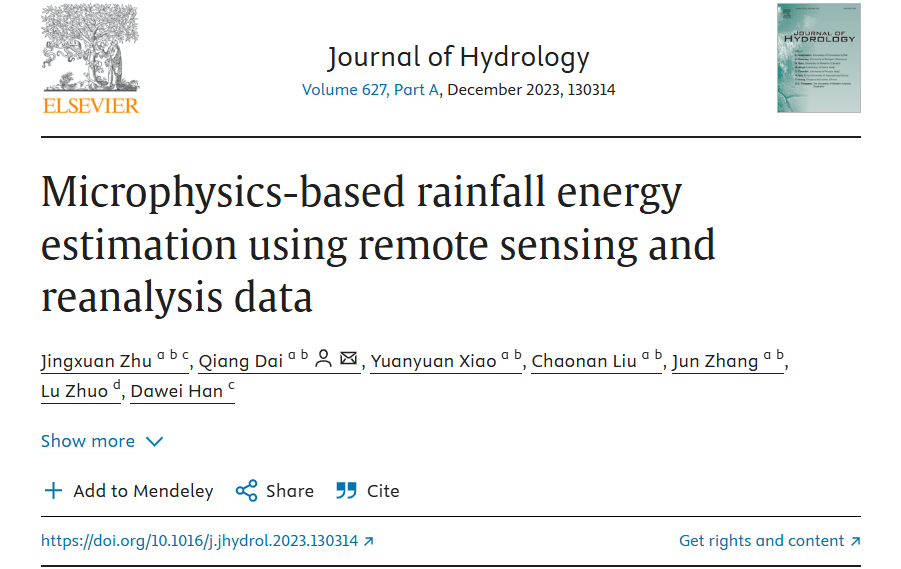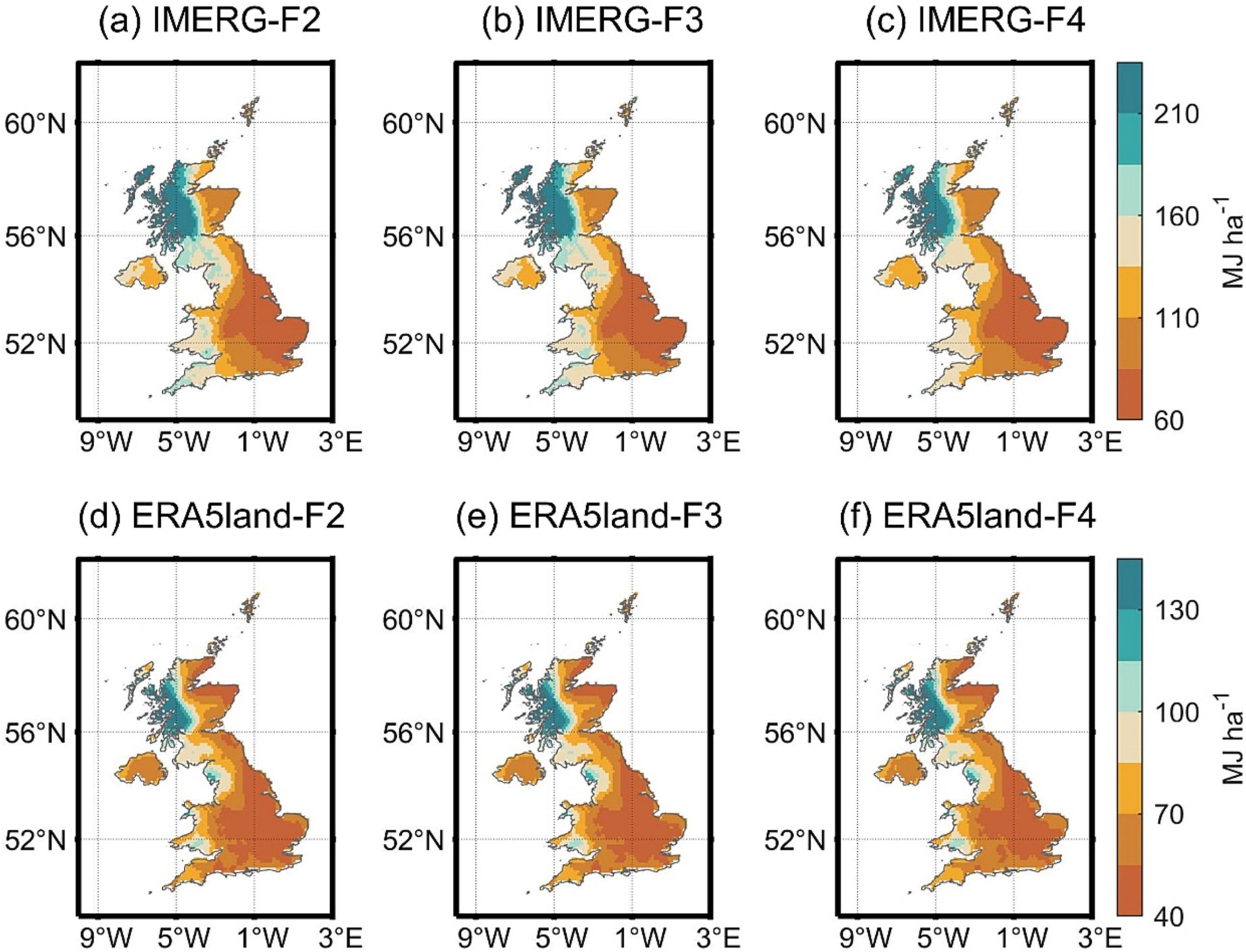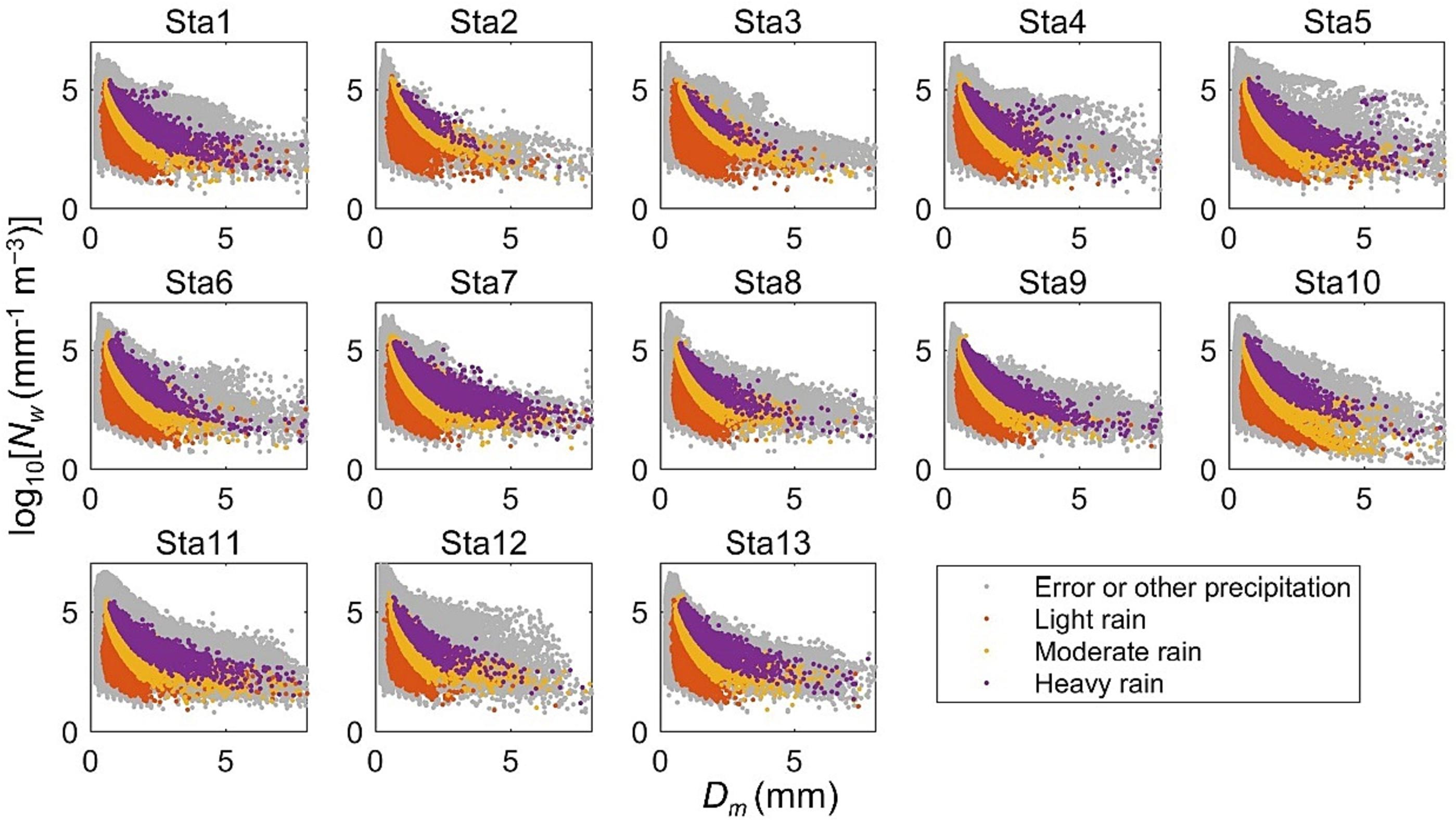The group has made research progress in the field of large-scale rainfall energy estimation:

Rainfall plays a crucial role in soil erosion by separating and transporting soil particles and is a key factor in soil erosion modelling. The rainfall erosive force reflects the potential impact of rainfall on soil erosion, which takes into account the interaction between raindrops and soil, and is mainly driven by the kinetic energy carried by raindrops. Traditional rainfall energy estimation methods rely on the pointwise empirical relationship between rainfall intensity and kinetic energy (KE-I relationship) obtained from raindrop spectrometers, often ignoring regional differences in rainfall microphysical characteristics.
Therefore, there are still two major research gaps in large-scale precipitation energy estimation. Firstly, there is a need to investigate the applicability of KE-I relations derived from raindrop spectrometer measurements to large-scale gridded precipitation data, and to assess the compatibility of their point relationships with remotely sensed and reanalysed datasets to ensure accurate and reliable estimation of rainfall energy at the grid scale. Secondly, the traditional method of estimating large-scale gridded rainfall energy using a fixed KE-I relationship ignores the spatial variability of rainfall features and introduces significant uncertainty, and there is a need to explore spatially-varying KE-I relationships in conjunction with the limited data from raindrop spectrometers to capture spatial variability of rainfall features to provide more accurate large-scale rainfall energy estimates.


First author: Dr Jingxuan Zhu
Corresponding author: Prof Qiang Dai
Other authors: Dr Yuanyuan Xiao, M.S. Chaonan Liu, Associate Professor Jun Zhang, Lecturer Lu Zhuo, Professor Dawei Han
Link to the paper: https://doi.org/10.1016/j.jhydrol.2023.130314